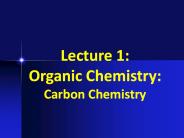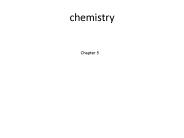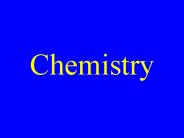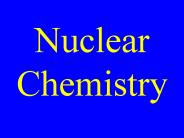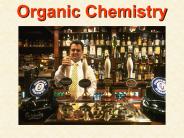Of Different Chemistry PowerPoint PPT Presentations
All Time
Recommended
The images shown above represent the evolution of chemistry. For example, on the left the four recognized elements were fire, air, earth, and water but it turned out ...
| PowerPoint PPT presentation | free to download
One fundamental of chemistry is understanding the electrons, ... Learn the chemistry for magic tricks, special effects, slime, and other attention getters. ...
| PowerPoint PPT presentation | free to download
However, not all lithium-ion batteries are created equal. Various chemistries within the lithium-ion category have distinct characteristics that make them suitable for different applications. This article by one of the best EV lithium ion battery manufacturers in Delhi explores the different types of lithium-ion battery chemistries and their uses.
| PowerPoint PPT presentation | free to download
Title: Chemistry 3719 - Organic Chemistry I Author: HP Authorized Customer Last modified by: Peter Norris Created Date: 8/26/2000 12:28:32 PM Document presentation format
| PowerPoint PPT presentation | free to download
Chemistry 3719 - Organic Chemistry I Professor : Dr. Peter Norris Office : 6014 Ward Beecher Telephone : (330) 941-1553 Email : pnorris@ysu.edu
| PowerPoint PPT presentation | free to download
Lecture 1: Organic Chemistry: Carbon Chemistry 1.Let s review bonding & Lewis Structures What is pencil lead made of if it isn't lead? Pencil lead is a mixture of ...
| PowerPoint PPT presentation | free to download
Title: CHEMISTRY 1307 General Chemistry I Author: B. Christmas Last modified by: Byron K. Christmas Document presentation format: Custom Other titles
| PowerPoint PPT presentation | free to view
Lecture Presentation Coordination Chemistry Chapter 24 April 25, 2005 Why Study Descriptive Chemistry of Transition Metals Transition metals are found in nature Rocks ...
| PowerPoint PPT presentation | free to download
Lecture 2: Organic Chemistry: Carbon Chemistry Let s review bonding & Lewis Structures What is pencil lead made of if it isn't lead? Pencil lead is a mixture of ...
| PowerPoint PPT presentation | free to view
Organic Chemistry I The ... useful in synthesis of complex molecules Alkyl Halides from Alcohols ... Second-order kinetics Proposed mechanism SN2 ...
| PowerPoint PPT presentation | free to view
Ionic Liquids in Green Chemistry Dr. Nie Wanli Chemistry Department of NWU, Xi an What are Ionic liquids (ILs)? Why consider of ILs? The characteristic properties ...
| PowerPoint PPT presentation | free to view
C10K/CHEM1902 Organic Chemistry Module 11 lectures Functional Group Chemistry Prof. H. Jacobs helen.jacobs@uwimona.edu.jm Books Solomons & Fryhle, ORGANIC CHEMISTRY ...
| PowerPoint PPT presentation | free to view
Ch. 25: Organic Chemistry Organic chemistry is the branch of chemistry that studies carbon compounds. Organic compounds were originally thought to be synthesized only ...
| PowerPoint PPT presentation | free to view
Emphasis on the ways in which chemistry is used - and the work ... Chris Otter. Salters Advanced Chemistry Project. Department of Chemistry. University of York ...
| PowerPoint PPT presentation | free to view
Cookies and Chemistry...Huh! ... Chemistry Recipes ... Most of the time in chemistry, the amounts are given in grams instead of moles ...
| PowerPoint PPT presentation | free to view
Title: Organic Chemistry 1 An introductory course in organic chemistry for CM1000, CM1002, CM2101 and related modules Author: Humphrey Moynihan Last modified by
| PowerPoint PPT presentation | free to download
Students find that some topics and concepts in General Chemistry are difficult ... The are inquired about what they see and how that relates to a given property ...
| PowerPoint PPT presentation | free to view
Essential Question: What are the differences and similarities among living things? Unit: Chemistry of Life, Chapter 2 Atom: basic unit of matter, made of 3 ...
| PowerPoint PPT presentation | free to view
chemistry Chapter 5
| PowerPoint PPT presentation | free to download
This presentation tells you about basics of chemistry.
| PowerPoint PPT presentation | free to download
CHEMISTRY Chapter 1 & 2 Matter, Measurements, and Calculations Chapter 1 Section 1 Objectives: Define chemistry List examples of branches of chemistry Compare ...
| PowerPoint PPT presentation | free to view
CHEMISTRY What Is It? Learning Goal I CAN give a working definition of CHEMISTRY, provide reasons for studying it, and identify the five main branches.
| PowerPoint PPT presentation | free to view
Title: Welcome to Chemistry 1001 Author: Aurora Last modified by: dlively Created Date: 2/19/2005 6:20:02 AM Document presentation format: On-screen Show
| PowerPoint PPT presentation | free to download
Chemistry! The study of the composition, structure, properties, and reactions of a substance. Matter Matter Pure Substances Mixtures Elements Compounds Heterogeneous ...
| PowerPoint PPT presentation | free to view
Chemistry (4/25) Objectives: Complete Chemical Quantities Exam Perform Hydrate Lab Homework: Answer post lab questions. Stoichiometry: Mole to Mole Stoichiometery ...
| PowerPoint PPT presentation | free to view
What is Chemistry? Chemistry is the study of matter and how matter changes. What is Matter? Matter is what everything is made of: stuff, material (it has mass and ...
| PowerPoint PPT presentation | free to view
Chemistry 3.1 Uncertainty in Measurements I. Accuracy, Precision, & Error A. Accuracy how close a measurement comes to the true value . 1.
| PowerPoint PPT presentation | free to download
Chemistry The Science of Matter: A development in the later part of the Scientific Revolution
| PowerPoint PPT presentation | free to download
Chemistry Seating Chart Scientific Method Observing Hypothesizing Experimenting Analyzing Chemistry The study of matter Matter Anything that: takes up space has mass ...
| PowerPoint PPT presentation | free to download
chemistry-level 1 career projects requirements review prelab online to find specific information necessary in your report getting started you should have 3 different ...
| PowerPoint PPT presentation | free to download
Bio-Chemistry Biology 1 Carbon is found in all living things. 4 electrons in its outer energy level Carbon has the ability to bond with many different elements.
| PowerPoint PPT presentation | free to view
... tea Solutions ALLOYS are solid solutions that contain at least 1 metal They are blended together so that they have ... CHEMISTRY!!!! Author: testuser Last ...
| PowerPoint PPT presentation | free to view
Regents Chemistry Topic IV Physical Behavior of Matter Different Phases of Matter An element, compound or mixture can exist in the form of a solid, liquid or a gas ...
| PowerPoint PPT presentation | free to download
Chemistry Matter Unit What is matter? What is chemistry? What is the organization of matter? What is the nature of matter? Chemistry Vocabulary A neutron is an ...
| PowerPoint PPT presentation | free to download
Biology Partnership (A Teacher Quality Grant) Chemistry II: Properties of Water and pH Nancy Dow Kathrine Alexander Gulf Coast State College Panhandle Area ...
| PowerPoint PPT presentation | free to view
Chemistry MAC NOTES: Electron Unit ... Quantum number 2 are sub-energy levels and are designated as s, p, d, and f. Quantum number 3 are the positions in space ...
| PowerPoint PPT presentation | free to download
Elements are represented by one to two letter symbols. Chemistry Vocabulary. Isotope: atoms of the same element that have different numbers of neutrons ...
| PowerPoint PPT presentation | free to view
Chemistry of Life Chapter 2 How are living things (biotic) and non-living (abiotic) things different? How are they the same? All composed of Atoms Element = substance ...
| PowerPoint PPT presentation | free to view
Nuclear Chemistry Radioactive Nucleii A nucleus that spontaneously decomposes Isotopes Elements with the same atomic number, but different mass number Isotopes All ...
| PowerPoint PPT presentation | free to download
CHAPTER 1 & 2 Chemistry Matter & Change How Chemistry is Used Pure Chemistry: Knowledge for knowledge s sake. Research to learn how something works.
| PowerPoint PPT presentation | free to view
Nuclear Chemistry
| PowerPoint PPT presentation | free to view
In Chemistry Measurement At the conclusion of our time together, you should be able to: Explain the difference between the two types of observations Give examples of ...
| PowerPoint PPT presentation | free to view
Inorganic Chemistry Bonding and Coordination Chemistry Books to follow Inorganic Chemistry by Shriver & Atkins Physical Chemistry: Atkins C. R. Raj
| PowerPoint PPT presentation | free to view
Organic Chemistry
| PowerPoint PPT presentation | free to view
Organic Chemistry
| PowerPoint PPT presentation | free to download
Introductory Chemistry: Chapter 1 Chemistry and You
| PowerPoint PPT presentation | free to download
Basic Chemistry ...
| PowerPoint PPT presentation | free to download
George Mason University General Chemistry 212 Chapter 15 Organic Chemistry Acknowledgements Course Text: Chemistry: the Molecular Nature of Matter and Change, 7th ...
| PowerPoint PPT presentation | free to view
Introductory Chemistry: Chapter 1 Chemistry and You * * * * * * * * * * * * * * * * * * * * * * * * * * * * * * * * * * * * * * * * * Rounding rounding to 2 ...
| PowerPoint PPT presentation | free to download
Organic Chemistry Introduction Functional Groups Names and Structures Alkanes Cycloalkanes Alkenes Alkynes Alcohols Names and Structures of Alkanes Some of the ...
| PowerPoint PPT presentation | free to view
AP Chemistry Introductory Material * * * * * * Mass calculations We don t directly weigh out molar quantities. We can use measured masses like kilograms, grams or ...
| PowerPoint PPT presentation | free to download
Organic Chemistry The chemistry of Life What is Organic Chemistry ?? Organic Chemistry is the chemistry of compounds containing carbon. Two common examples are CO2 ...
| PowerPoint PPT presentation | free to view
Regents Chemistry Topic 2 The Periodic Table and Formulas / Equations Regents Chemistry Introduction to the Table Groups and Families Elements of Metals, Nonmetals ...
| PowerPoint PPT presentation | free to download
Organic Chemistry 10 Chemistry Alkanes General Formula Description Combustion Reactivity Chemical test Uses CnH2n+2 Saturated Burns in Oxygen to form CO2 + H20 (CO ...
| PowerPoint PPT presentation | free to view
Introductory Chemistry: Chapter 1 Chemistry and You * * * * * * * * * * * * * * * * * * * * * * * * * * * * * * * * * * * * * * * * Rounding rounding to 2 significant ...
| PowerPoint PPT presentation | free to download
Chemistry Chapter 5 Electrons in Atoms The 1998 Nobel Prize in Physics was awarded
| PowerPoint PPT presentation | free to view






